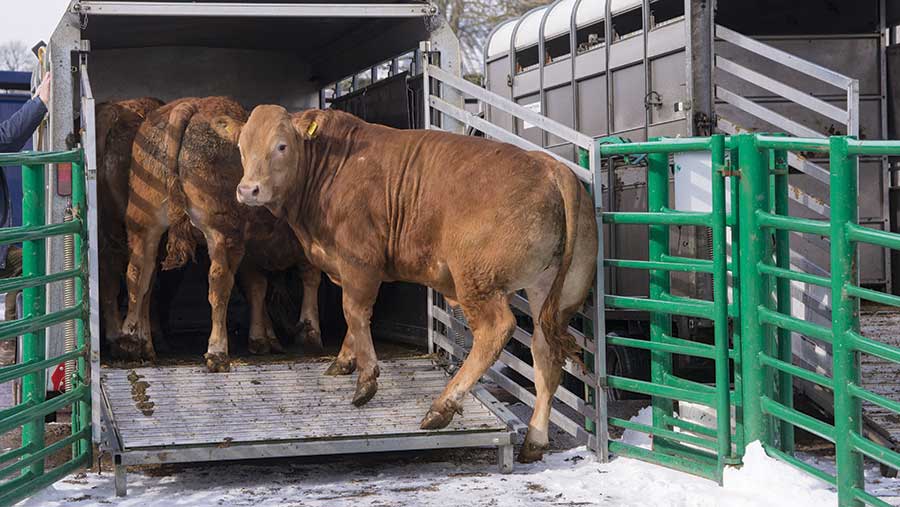Livestock marts call for clarity over cattle movement charges
 © John Eveson/FLPA/Rex Shutterstock
© John Eveson/FLPA/Rex Shutterstock Auctioneers and farm leaders say they are still seeking clarity on new cattle specifications, which are seeing the value of animals reduced by £50-£60 a head if they are deemed to have been moved too many times.
Concern has been growing in recent weeks after it was revealed that Dunbia was introducing a “four residencies” limit on stock, which took effect from 16 November.
It is understood that the company is now applying a 15p/kg reduction for any animal that have moved from farm to farm.
Penalties have also been introduced for carcasses heavier than 400kg.
Processor APB has also introduced new terms and conditions, which took effect from 10 November.
See also: Beef farmer fury as farmers given two weeks’ notice of spec changes
It is understood to be applying a 10p/kg cut for animals that have exceeded their movement limit and an upper weight limit of 420kg.
Other businesses are also operating to similar standards.
NFU Scotland said it was contacting abattoirs and processors to gain clarity on how “maximum moves rules” are to be applied to cattle as its members were finding different abattoirs were deducting different amounts for varying numbers of moves.
NFUS livestock chairman Charlie Adam added: “First and foremost we need clarity from each processor on its definition of a move.
“There appears to be two different rules in use – one based on the number of times an animal has changed ownership, the other counting the number of farms the animal has been on – regardless of whether those farms are owned by the same business.”
Chris Dodds, executive secretary of the Livestock Auctioneers Association, said the organisation had been calling for an explanation of the rules for the past three weeks, but was yet to hear back.
Some people were saying that a move between holding numbers counted as a move, while others were saying it was just a change in ownership, he said.
